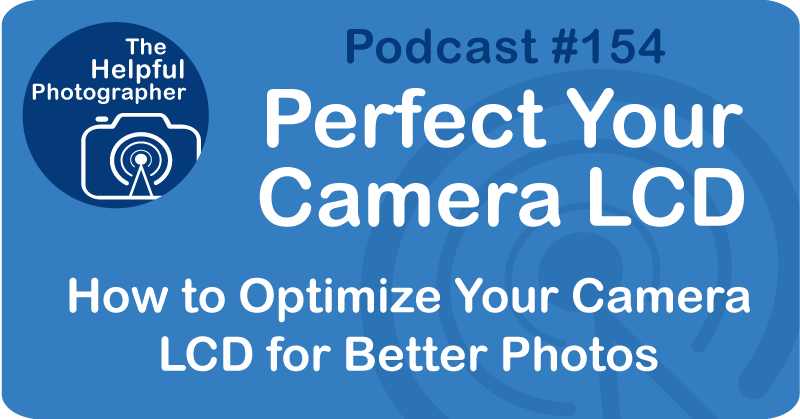Perfect Your Camera LCD #154

Last week I talked about whether or not you should use your LCD screen or your viewfinder. Today I want to talk about setting up the display itself. With more than half the cameras I see on Photo Safari being mirrorless now, I'm seeing an interesting issue pop up. Mirrorless cameras make it super easy to shoot using the LCD, and a lot of people are doing that. But here's the thing, most folks aren't setting their LCDs properly. I said it, properly.
In most cameras, you'll find options to change the information display on your LCD and in your electronic viewfinder. Some will even allow you to customize that information as well. Things like how many shots you have left, your battery level, a histogram, or even an electronic level. You can choose to show some, all, or none of that while you shoot. And even though these options are available, what I've noticed is that most people leave their displays on the factory default settings.
This is one of the few times I adamantly disagree with the factory settings. The problem? These displays often clutter up the edges of your screen with numbers and graphics that can actually interfere with how you compose your shot. Instead of framing your image to the actual edges of the frame, I see people subconsciously composing the image to the edge of those numbers. And that's a problem. Think about it. If you're using a full-frame camera to maximize resolution but then lose 15% of your image because you're composing around that screen clutter, that's a huge waste. Good thing you bought that full-frame camera! Here's my suggestion. Take some time to go through your settings and remove as much unnecessary information as possible from your display. On my camera, for example, I can scroll through multiple display options. Most of the time, I keep the screen clean with no extra information on the frame at all, just the image I'm framing. If there's information on the outside of the image area, I don't really care about that because it doesn't affect the way I'm seeing the image. And most of that information on the outside of the image area is actually necessary. That said, I keep a couple of display options handy for specific situations. For example, if I'm shooting on a tripod, I'll use the electronic level to make sure everything is perfectly straight. But again, that's something I scroll to when I need it. Not something that's always taking up space.
Now I know some of you love using the histogram, and that's fine. But hear me out. Histograms take up a lot of space on the screen. If you leave it on all the time, you're probably not seeing the full picture. Literally. My advice? Make sure the histogram is available, but not constantly visible. Switch to it only when you need to, otherwise leave it off. For those who can't customize the actual display, try hitting the DISP or INFO button on the back of your camera and see if you get other options. I find that most cameras offer at least three options. And by the way, one option is to have a black screen. At the end of the day, the goal is to keep your screen uncluttered so you can focus on composing the best possible shot.
If you're not paying attention to the entire frame, you're missing out, and that's the last thing we want. So that's my little tip for today. Take some time to set up your LCD and viewfinder displays. You'll be amazed how differently you frame your shots. Until next time, keep on shooting!











